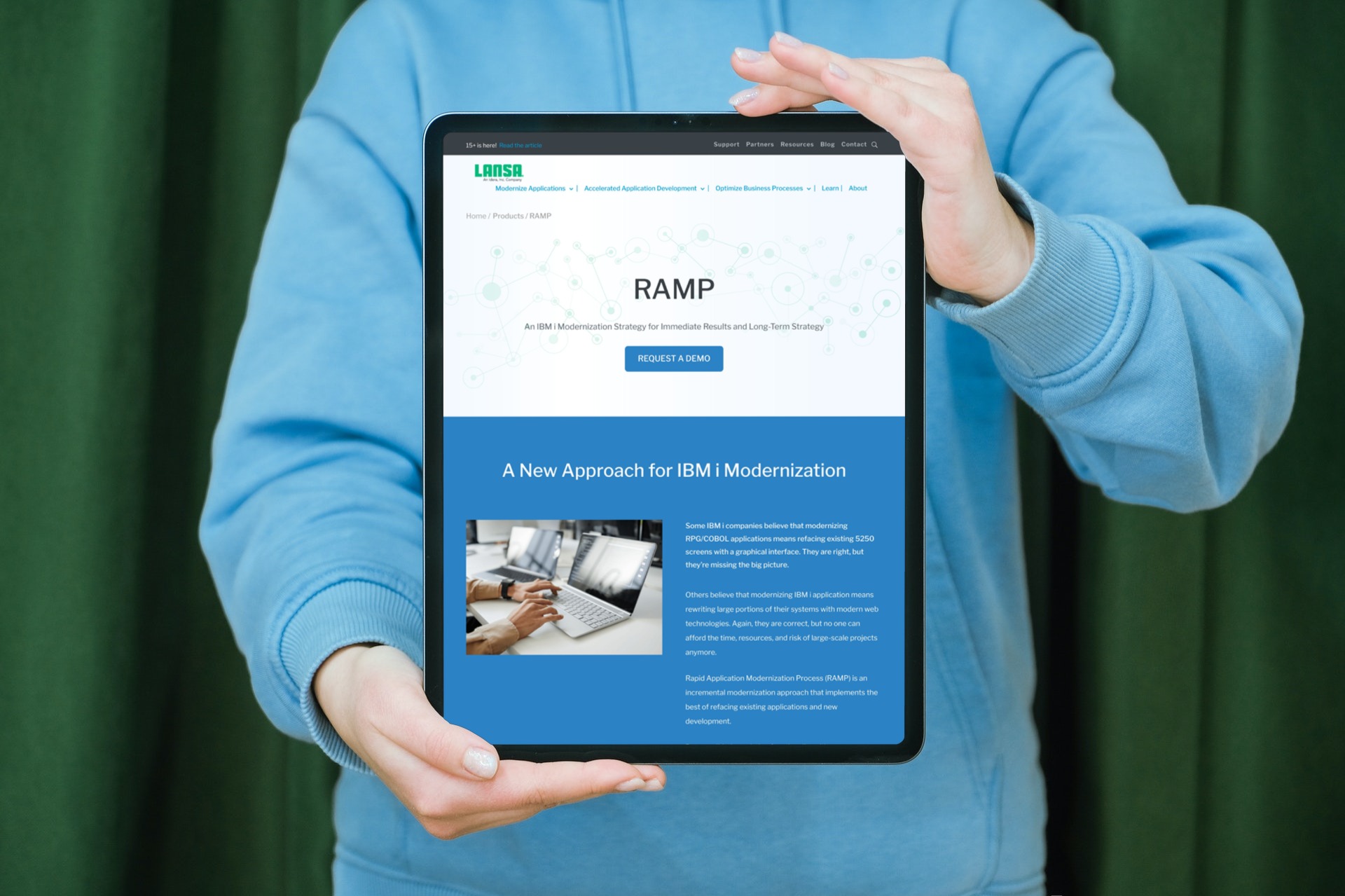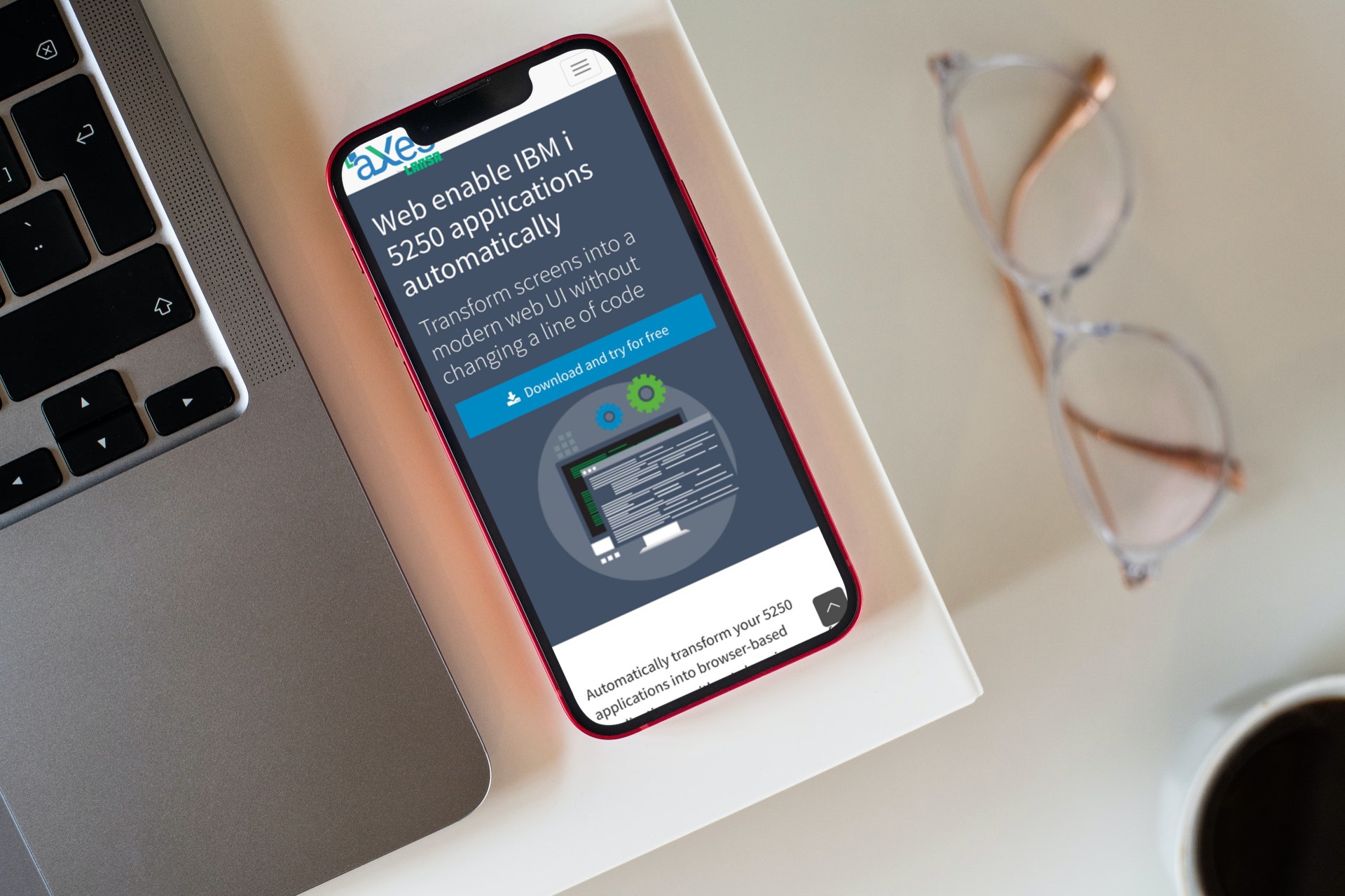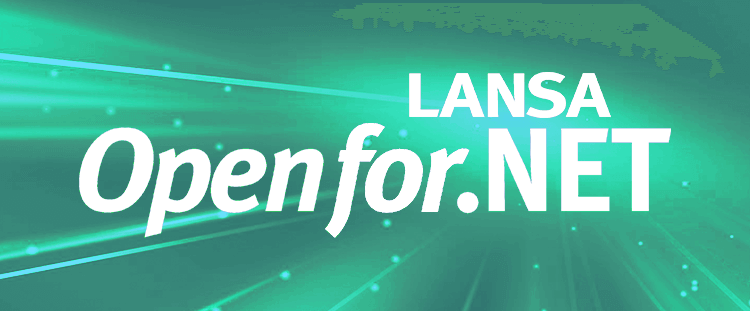The Modernization Dilemma
Business users want new applications now. Market and regulatory pressures require faster application updates and delivery into production. Your IBM i developers are approaching retirement and you see no sure way to fill their positions with experienced developers. Young developers have not heard of the IBM i, RPG or COBOL; and they prefer languages they know. If you’ve experienced one or more of these pain points, you may also be caught between maintaining your existing applications and the uncertainty of moving to something new.
It’s easy for organizations to point fingers at legacy platforms when systems have fallen out of favor. And IT is feeling the pressure. Executives and line-of-business (LOB) managers often suggest that IT simply jettison these legacy applications and platforms without knowing the impact it will have on the company.
How do you choose a new platform? What’s the best plan for transitioning from the IBM i to a new platform? How much will the transition cost and how long will it take? Or is it better to modernize your IBM i applications?
To determine whether you face the modernization dilemma, consider how well your applications and information management infrastructure support business requirements. The applications and infrastructure have managed up to now but are they ready to face the rate of change and demands from today’s customers, suppliers and economic environment?
Do Existing Systems Support Business Requirements?
Are your applications aligned with your corporate strategy? Successful companies harness their intellectual power, physical capabilities, resources (including IT assets), culture and business processes to support their corporate strategy to build and supply the products and services.
Companies require regular assessment of the capabilities inherent in their applications to retain a competitive advantage. The essential question an assessment must answer is the extent to which an application supports today’s business requirements. Support means both current business requirements and potential requirements arising from changes in business operations and changes mandated by compliance and regulatory requirements. Keep in mind that all applications require flexibility to adapt to new innovation while supporting maintenance activities.
Regular application reviews can help to maintain applications so that they support constant change in business requirements. Without regular reviews, applications can become tired and inflexible; this impression, real or imagined, raises questions on the longevity of your legacy applications and platforms. A capability assessment will determine the practicality of migrating or modernizing these applications.
Why is IBM i Considered a Legacy Platform?
The chatter in articles and blogs suggests that the IBM i is not a viable information management platform. Analysts have been predicting its demise every year for the last two decades. There was a time when the chatter suggested the IBM AS/400 (a previous name of the IBM i) was not a viable option because it was not an open server. Why has the IBM i attracted so much comment? Maybe it’s a failure to understand the platform’s unique architecture or maybe the age is a concern.
Here are some observations on attitudes to the IBM i:
Age
- The IBM i started out as the AS/400 in 1988, which is a long time in internet years. It has had a few name changes since, but its core essence of providing customers a platform with integrated operating system and database hasn’t changed. With the advent of cloud computing, servers have become somewhat of a commodity to developers because they are almost invisible to them – out of sight, out of mind.
Business Developers
- There was a time when servers and software were the domain of a group of people known collectively as the Data Processing Department, Computer Department or Management Information Services, and the de facto programming language for IBM i was RPG.
- Not so today. Business functions set aside budget for developing and operating applications on additional server platforms like Windows, Linux and Unix. Until recently, the most popular and modern development tools didn’t run on IBM i. Luckily those days are gone now that IBM companies can leverage a number of open-source offerings as well as some low-code development platforms to deliver the same types of applications found on other server platforms.
Cloud
- Amazon and Microsoft spent the last decade pushing the cloud as the most effective place to operate applications. If the cloud seems attractive, the IBM i has many cloud offerings available through IBM and its partners – whether public, private or hybrid.
Development Tools
- Despite the availability of some more modern, open-source development tools, the vast bulk of the programming code underpinning IBM i applications is still RPG (and to a lesser extent COBOL).
- RPG and COBOL are extremely low on the programming language ranking scales. They were formed in an age before the internet and appear incapable of supporting the fast-moving development required for modern applications
- Even though many open-source languages and frameworks are available for IBM i, many RPG/COBOL developers struggle with learning these new technologies, so the uptick has been slow. Low-code development platforms can help because they shield developers from the underlying technologies, enabling them to build modern applications quickly without having to learn multiple skillsets.
Developers
- People are the biggest burden to the corporate world. They are expensive, can be unreliable, resign at inconvenient times and get stuck in their ways as they grow old. The generation of young RPG and COBOL developers that grew up and evolved with the AS/400 / iSeries / IBM i are now in their twilight years and near retirement.
- The biggest challenge IBM i shops face now is finding the next generation of staff to maintain the three decades of custom RPG and COBOL applications still in production today. Most young developers couldn’t spell RPG if you spotted them an R and a P. Very few colleges teach RPG or COBOL as part of their curriculum.
- Some of the pressure to leave the IBM i derives from the difficulty acquiring skilled developers from a diminishing pool and the cost and time required to train young developers on IBM i; and that assumes young developers are available and willing to sign up
Ignorance
- Most business users are unaware of the business rules, intellectual property and customizations behind their “ugly green screen” application. A leave-or-stay assessment based purely on the user interface of an application and its platform ignores the cost and effort required to replace the application, and the business value the application provides.
Perception
- Legacy can be viewed as being positive or derogatory, depending on your perspective. A positive perspective views legacy as an item from the past providing tried and true value. In contrast, a derogatory perspective paints the item as worthless. A common perception of the IBM i is a legacy platform unable to participate in the new world of web and mobile applications, REST services and the API economy.
Scapegoat
- Legacy platforms, including IBM i, attract criticism as the root cause of technology tardiness and lack of responsiveness to changing business requirements. That’s a basis for business users wanting to replace the IBM i.
- Companies need to remove emotion from the decision-making process by conducting a business-led, IT supported audit of the entire ecosystem, in order to understand the business benefits of a platform change
Not so today. Business functions set aside budget for developing and operating applications on additional server platforms like Windows, Linux and Unix. Until recently, the most popular and modern development tools didn’t run on IBM i. Luckily those days are gone now that IBM companies can leverage a number of open-source offerings as well as some low-code development platforms to deliver the same types of applications found on other server platforms.
Is the negative impression valid? Many criticize IBM’s marketing efforts in not expounding the advantages of the IBM i platform as it continues to add modern features to the platform. IBM i features include upgraded hardware, virtualization, Linux, open source programming languages (PHP and Python are examples) and low-code development tools, all while IBM i continues to run programs written years/decades ago.
What’s the Answer?
After considering the state of your applications and information management infrastructure three answers come to mind.
LANSA continues to be proud of our long history with the IBM i platform; visit our website to learn how to maximize your productivity, innovation and investment in IBM i. In my next blog post, I’ll share motivating factors that often influence IT pros decisions to migrate or modernize. Stay tuned!

























